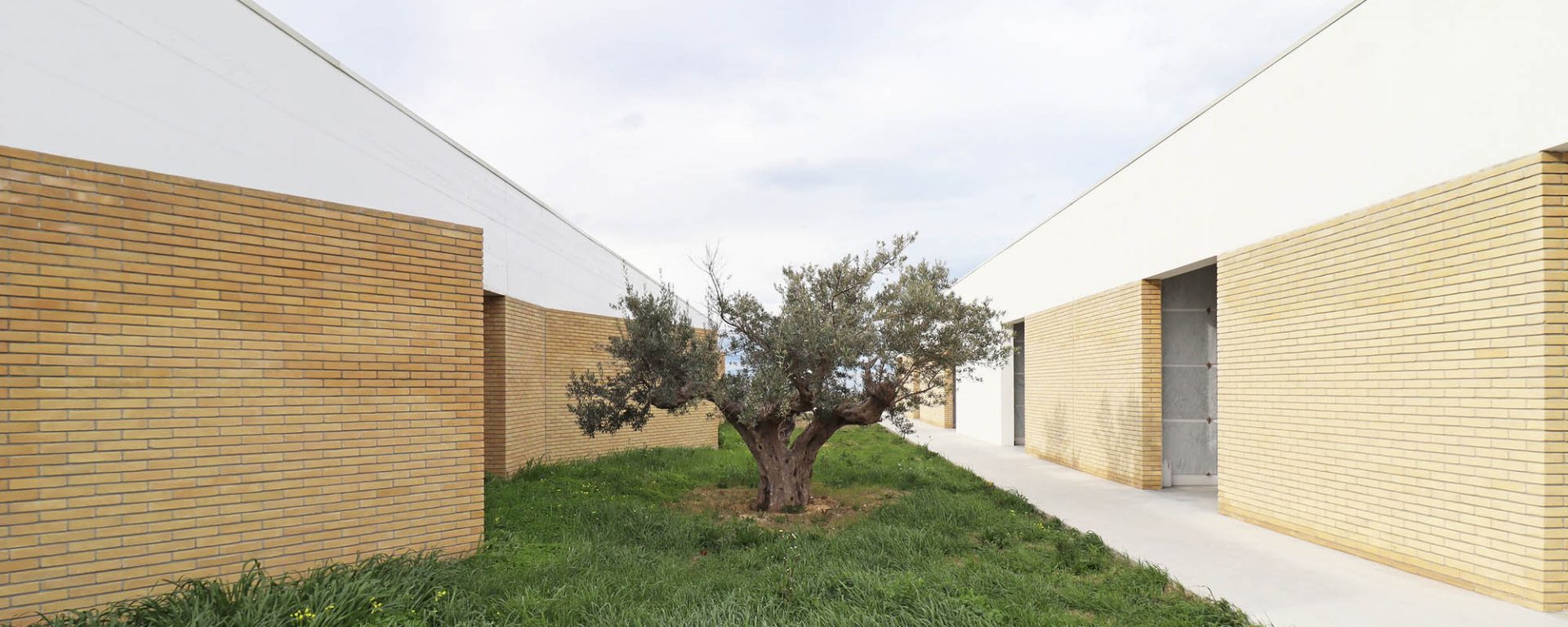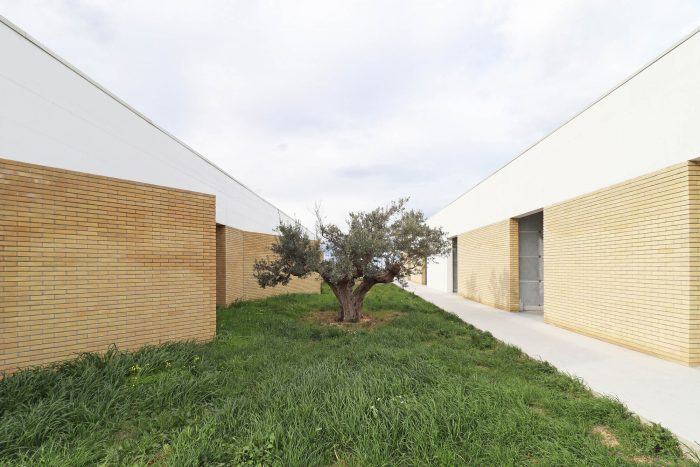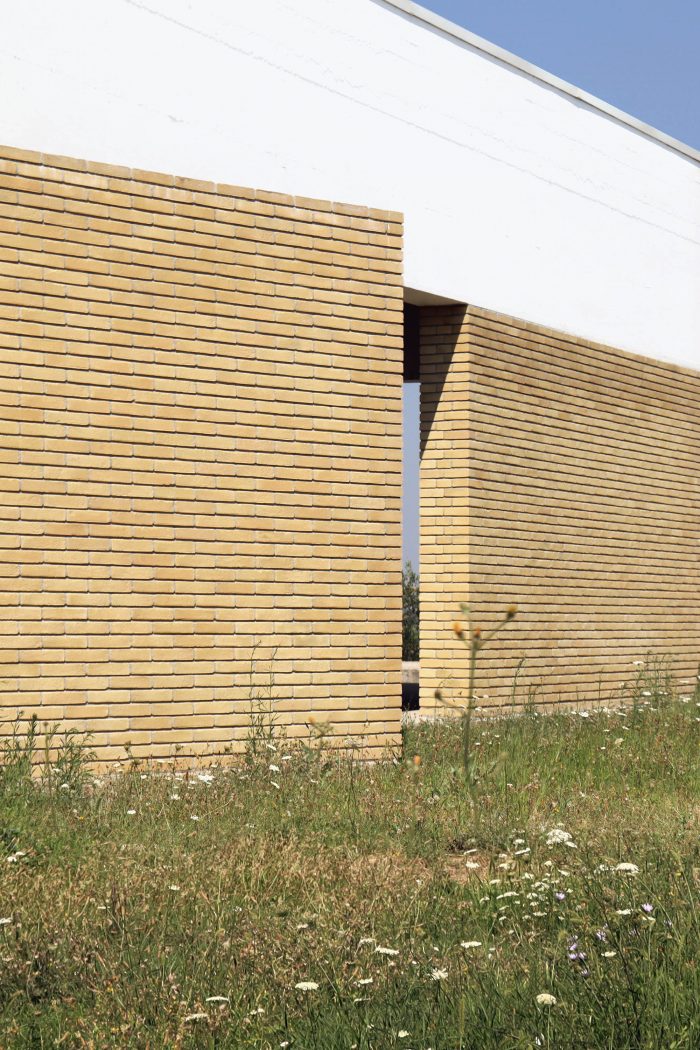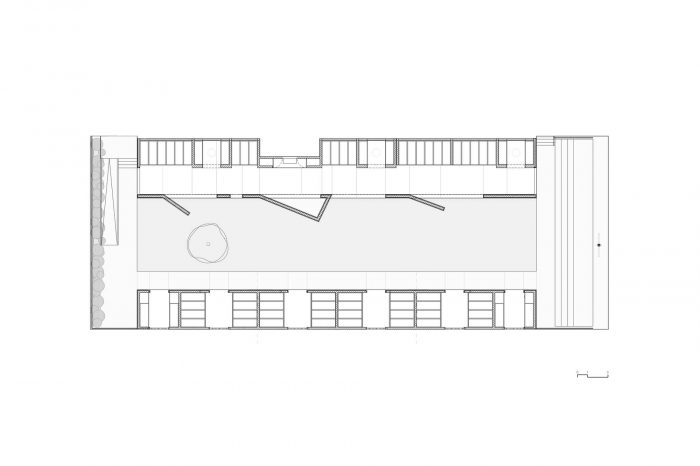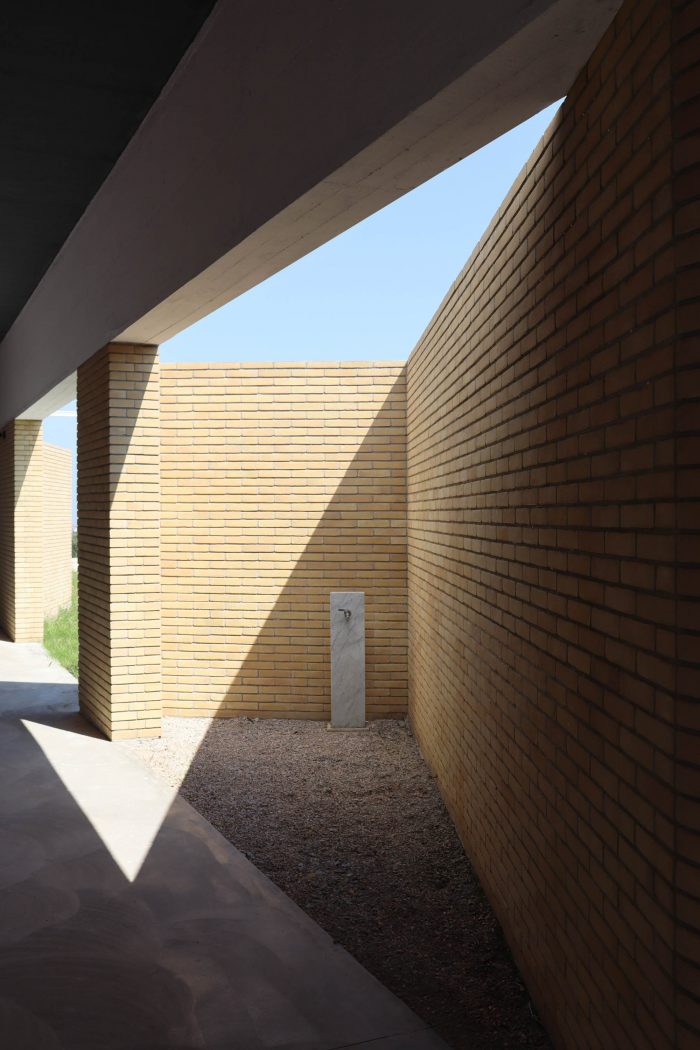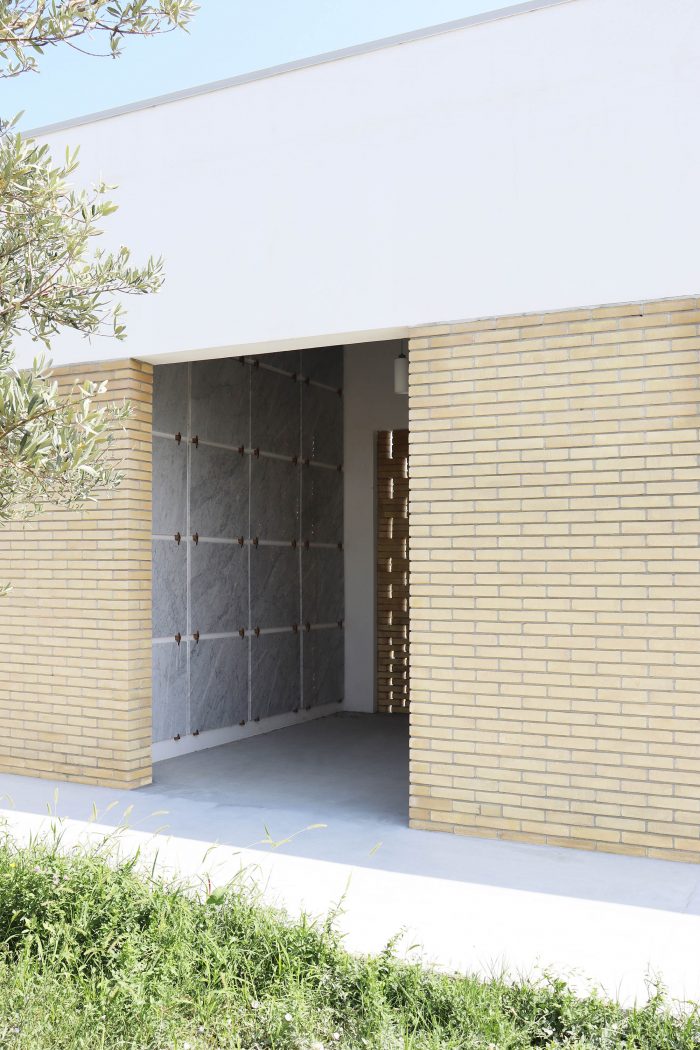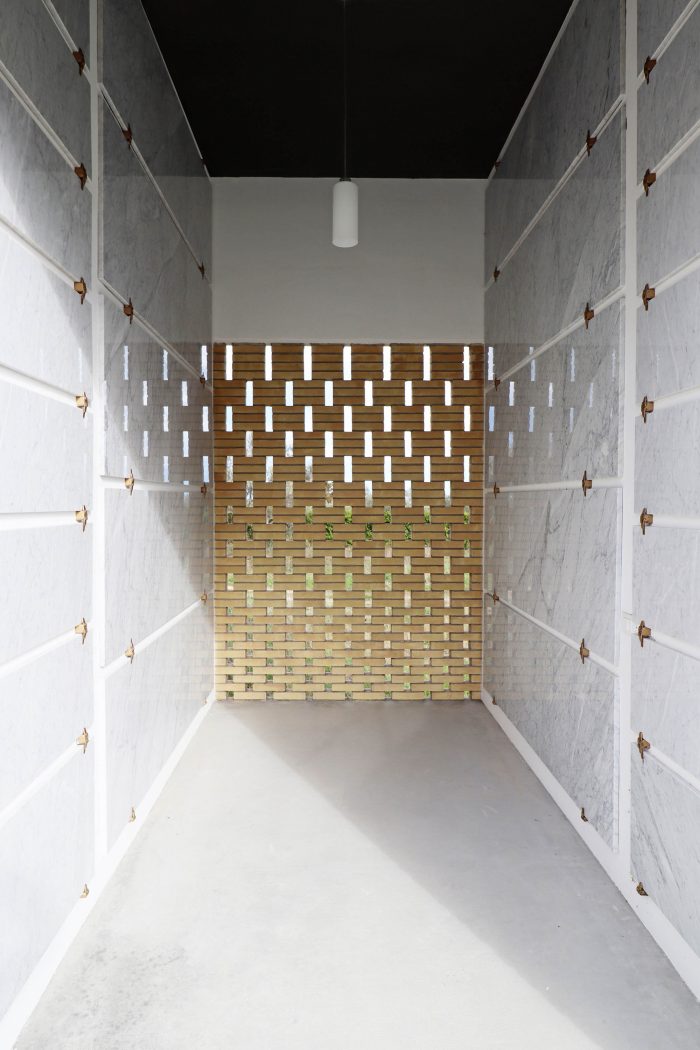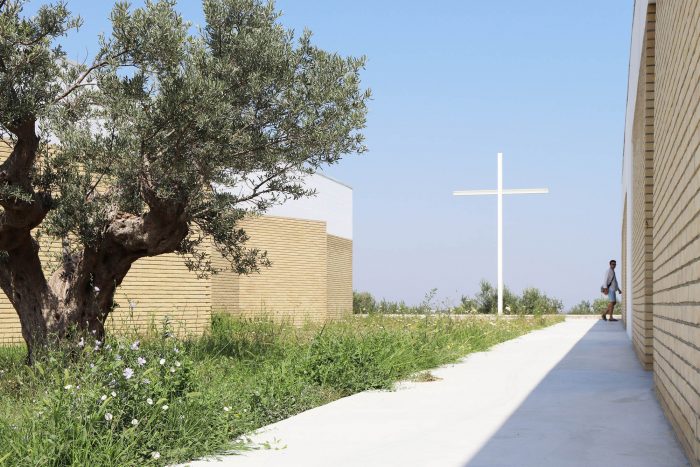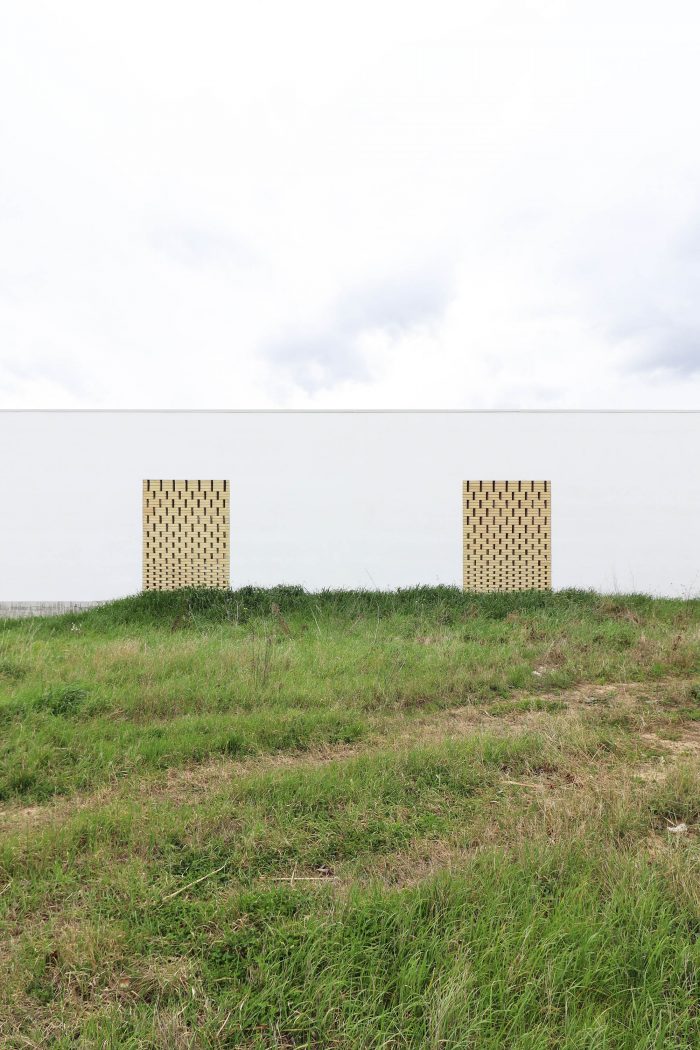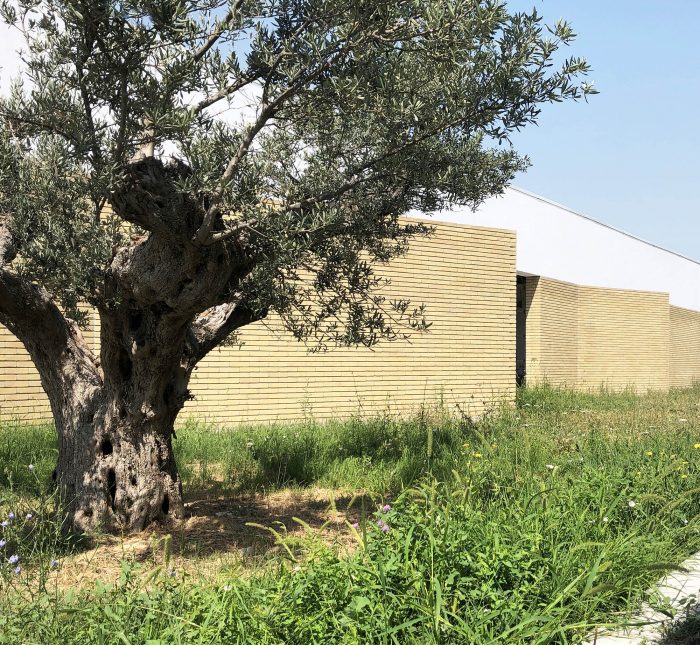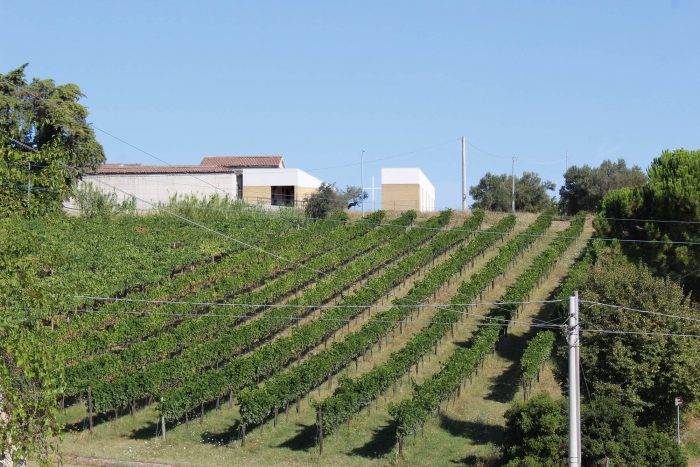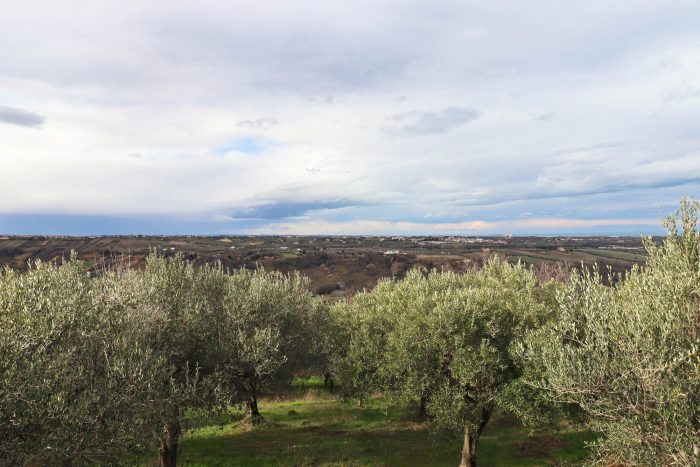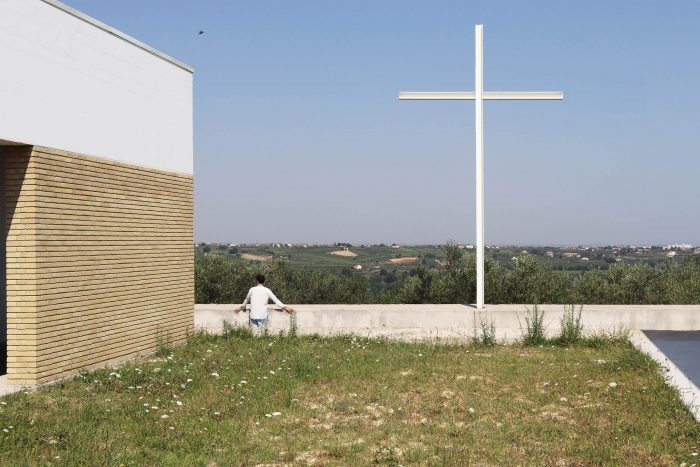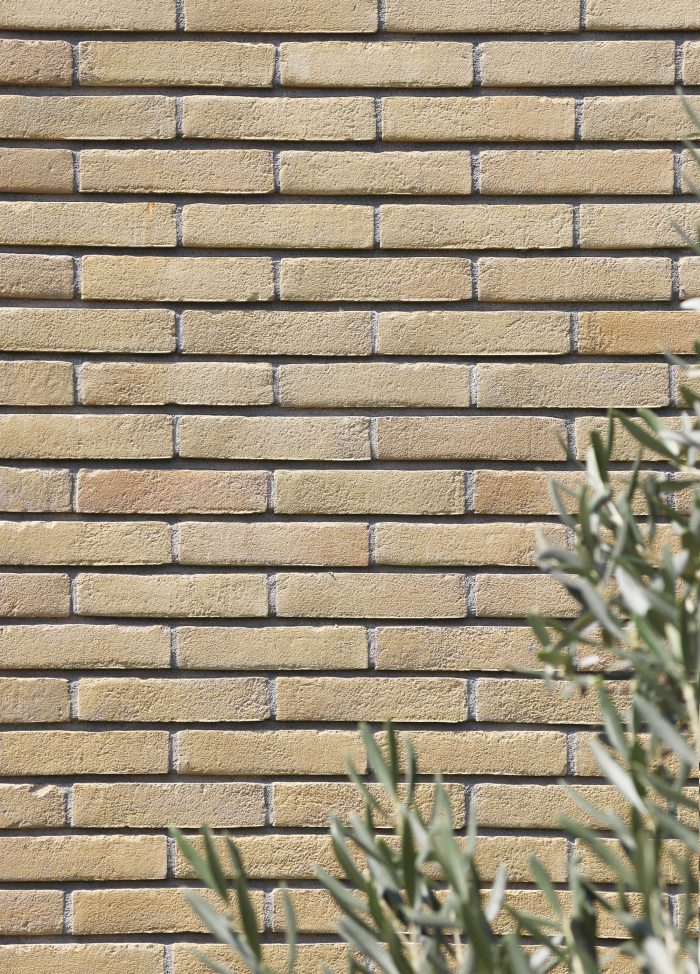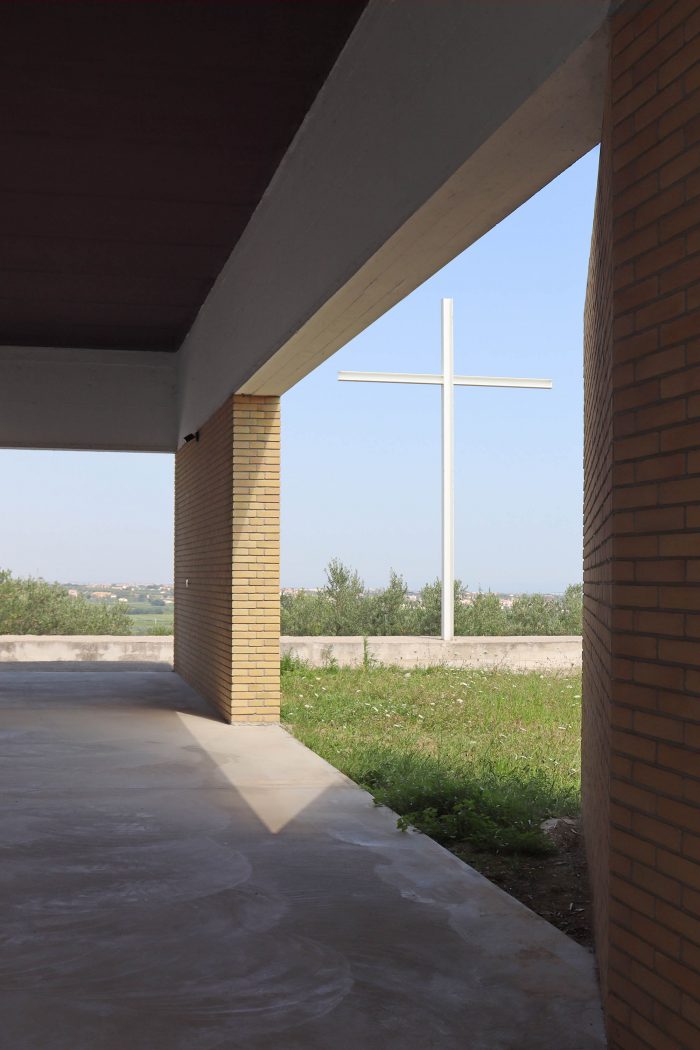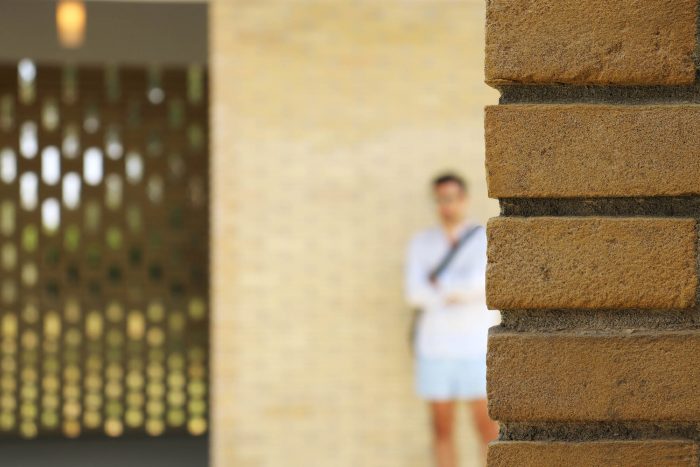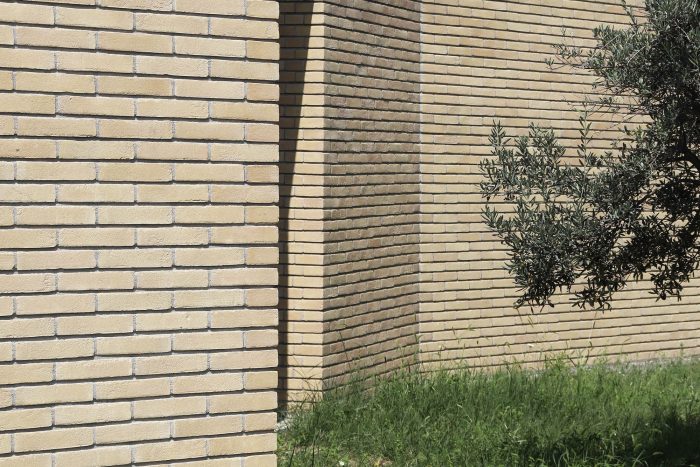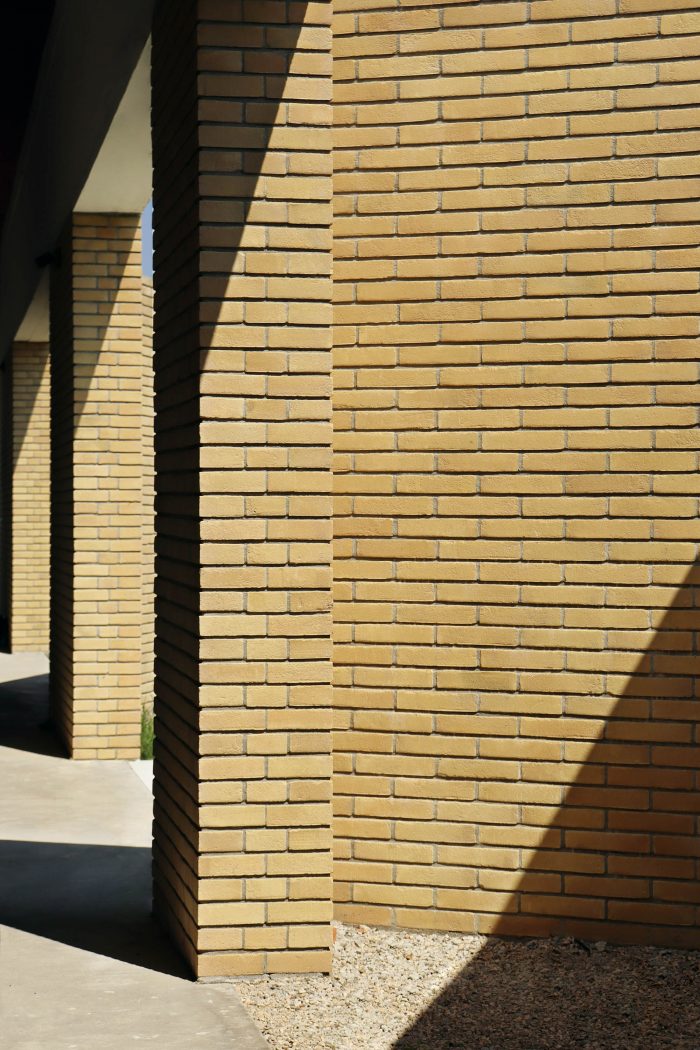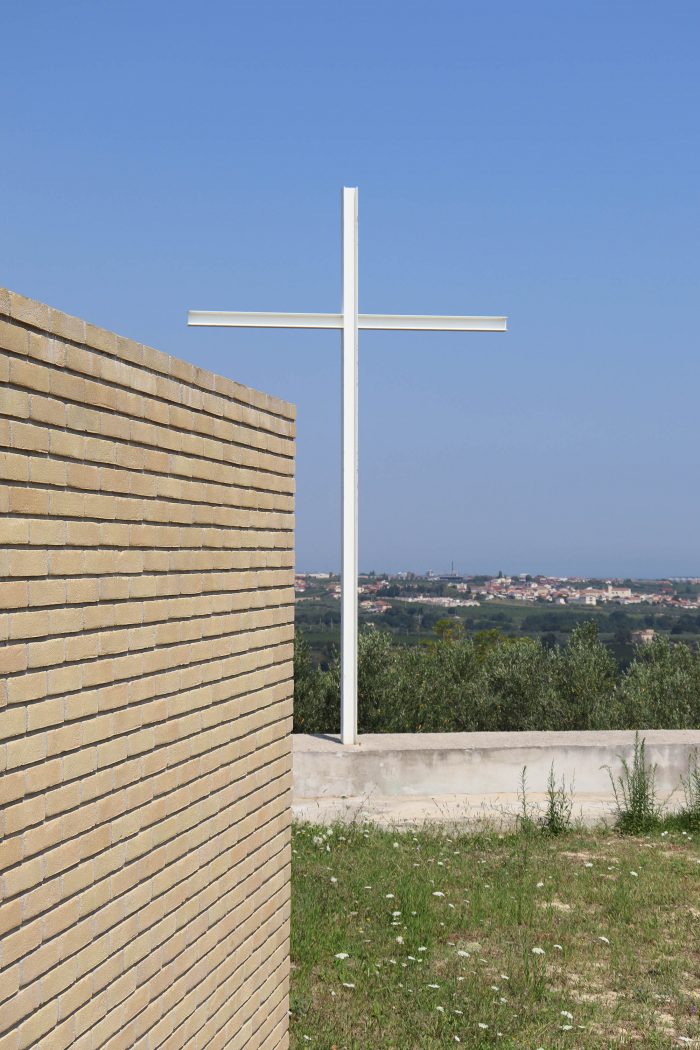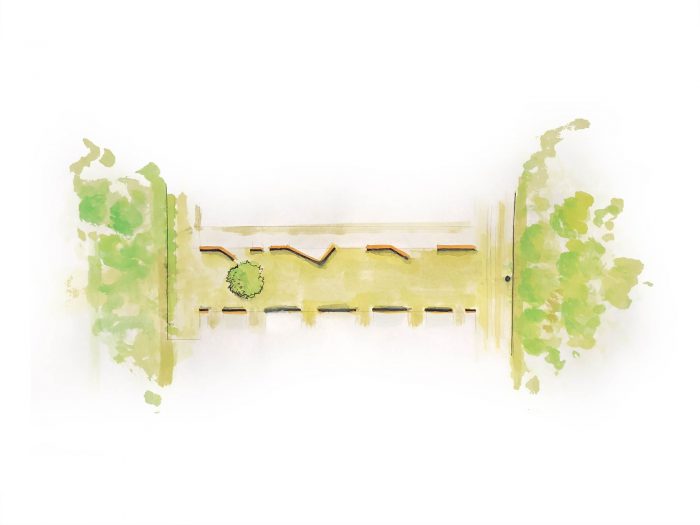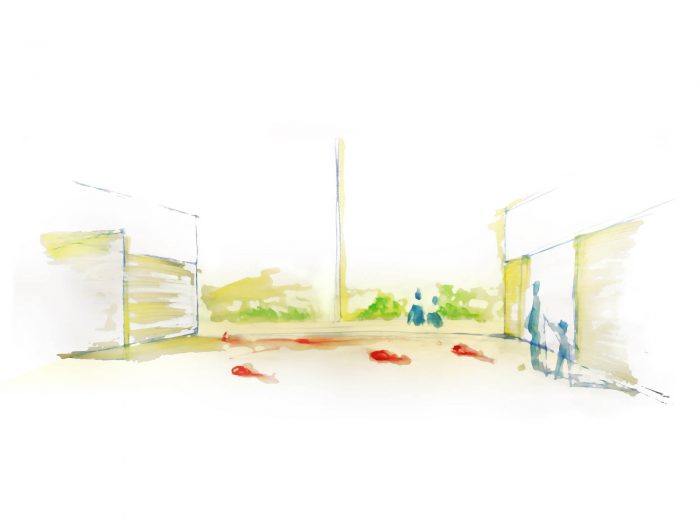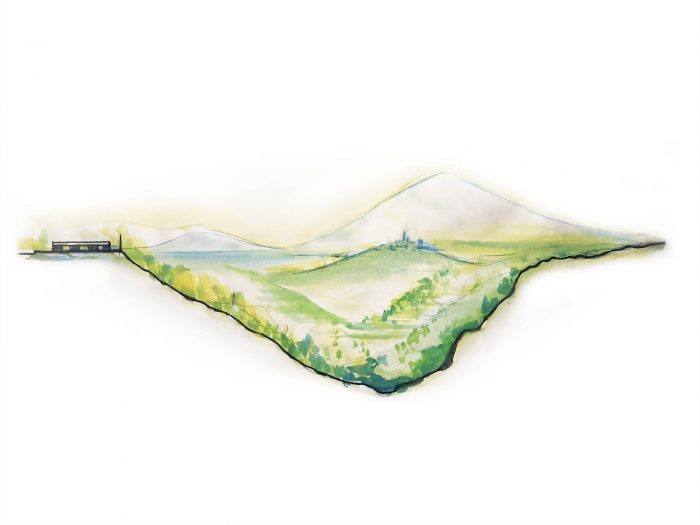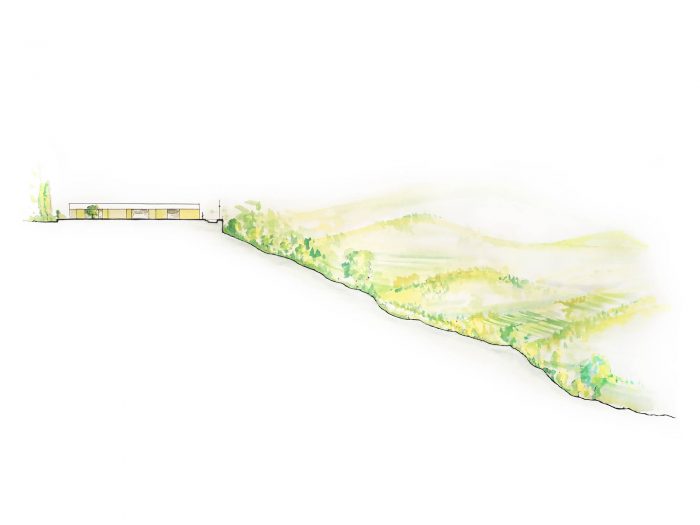弗里萨公墓的扩建是一个重新思考神圣空间与我们自己之间关系的机会。在这些地方,我们会想到我们逝去的亲人,我们在沉默中行走,感知最轻微的噪音和最微妙的气味,反思我们自己的生活,反思那些前人和后人的生活。因此,该项目旨在放大这些感知,创造清醒而简约的空间,向景观和地平线开放。墓地是一个卓越的封闭式围墙,与外部世界隔绝。一个死者的城市,似乎想隐藏和被遗忘。
The extension of the Frisa cemetery is an opportunity to rethink the relationship between sacred spaces and ourselves. In these places we think of our departed loved ones, we walk in silence, perceiving the slightest noises and the most subtle scents, reflecting on our own lives, on the lives of those who have gone before us and those who will come after. Thus, the project intends to amplify these perceptions, creating sober and minimal spaces, open towards the landscape and the horizon. The cemetery is par excellence a closed enclosure, separated from the outside world. A city of the dead that seems to want to hide and be forgotten.
新的扩展部分被设想为一个受保护的地方,但在概念上和感知上向外部世界开放,与葡萄园和橄榄树林建立了直接和沉思的关系,并向海倾斜。该项目是一条道路。一条物理的道路,将游客从城市和人类空间引向全景,但同时也暗示了一条精神的道路,引导游客反思从尘世到死亡的过程。该建筑群基于人工景观的创造,在靠近深谷的平坦地形上,由两个平行而对立的正面形成的建筑空间。在西边的第一座建筑中,砖砌的隔墙保护着耧车门廊,并在其上拉出阴影。这些隔断弯曲,将坟墓隐藏在街道的视野中,还创造了一个带有喷泉的三角形天井,并与以线性发展为特征的第二座建筑建立了空间张力。
The new extension is conceived as a protected place but conceptually and perceptively open to the outside world, establishing a direct and contemplative relationship with vineyards and olive groves sloping down to the sea. The project is a path. A physical path, leading the visitor from the urban and anthropic space towards the panorama but also suggesting a spiritual path which leads to reflect on the passage from earthly life to death. The complex is based on the creation of an artificial landscape, an architectural space formed by two parallel and opposing fronts on a flat terrain close to a deep valley. In the first building to the west, brick partitions protect and draw shadows over the columbaria portico. These partitions bend to hide the graves from the street view, also creating a triangular patio with a fountain and establishing a spatial tension with the second building characterized by a linear development.
第二座建筑具有完全不同的类型学,被划分为更小的区域,交替着教堂和骨灰堂。砖墙也包围着这座建筑,通过对历史上谷仓的典型网格的重新解释。两个正面所创造的空间被设想成一个花园,由当地植物自由地殖民,加强了农业景观的感知,象征性地穿过项目。一棵巨大的橄榄树被重新安置在地面上。与柏树不同的是,橄榄树不是典型的墓地植物,而是加强了项目与环境之间的关系,是数千年来在这些山丘上耕耘的人们的忠实伙伴。开放空间悬浮在景观之上。
This second block has a completely different typology, divided into smaller areas alternating chapels and columbaria. The brick walls envelop this building too, through a reinterpretation of the typical grids of historic barns. The space created by the two fronts is conceived as a garden freely colonized by local plants, reinforcing the perception of an agricultural landscape that symbolically crosses the project. A large pre-existing olive tree has been relocated on the ground. Unlike the cypress tree, the olive tree is not a typical cemetery plant, but strengthens the relationship between the project and its context, being a faithful companion of the people who has cultivated these hills for thousands of years. The open space is suspended over the landscape.
通过台阶系统,可以创造出一个腹廊,同时,消除了对护栏的需求,因为护栏会限制山谷的视野。因此,该项目是开放的,即使尊重封闭的规则,并从外部保护墓地。一个以白色十字架为顶点的地方,在天空的蓝色和葡萄园的绿色中显得格外突出。这个元素 “衡量 “了空间的深度,确立了一个界限。它是对早期的一个金属十字架的提醒,这个十字架在历史悠久的墓地中一直存在,直到20世纪初才消失。墓园的新扩展不仅仅是为死者献花的地方,而是一个纪念他们的地方,倾听沉默的声音,沉思他们生活的土地,将地平线对准无限和超越的地方。
A system of steps allows the creation of a belvedere and, at the same time, eliminates the need for a parapet that would limit the view of the valley. The project is therefore open, even though respecting the rules of closure and protection of the cemetery from the outside. A place culminating in a white cross, standing out against the blue of the sky and the green of the vineyards. This element “measures” the depth of the space and establishes a limit. It is a reminder of an earlier metal cross that was present in the historic cemetery until the beginning of the 20th century and has been lost. The new extension of the cemetery is not just a place to lay a flower for one’s dead, but a place to remember them and listen to the silence, contemplating the land where they lived, aiming the horizon towards the infinite and the transcendent.
建筑师: arcari cimini architettura
面积:400平方米
年份:2019年
照片:Beatriz Arcari
厂家:Lamar Lavorazione Marmi
主设计师:Remo Cimini
概念设计:Andrea Jasci Cimini
结构:Remo Cimini,Zulli Alfredo
地质学家:Alessio Carulli
承包商:4D Appalti srl, Emmedue Costruzioni srl
城市 : 弗利萨
国家:意大利
Architects: arcari cimini architettura
Area: 400 m²
Year: 2019
Photographs: Beatriz Arcari
Manufacturers: Lamar Lavorazione Marmi
Main Architect:Remo Cimini
Concept Design:Andrea Jasci Cimini
Structure:Remo Cimini, Zulli Alfredo
Geologist:Alessio Carulli
Contractor:4D Appalti srl, Emmedue Costruzioni srl
City:Frisa
Country:Italy

